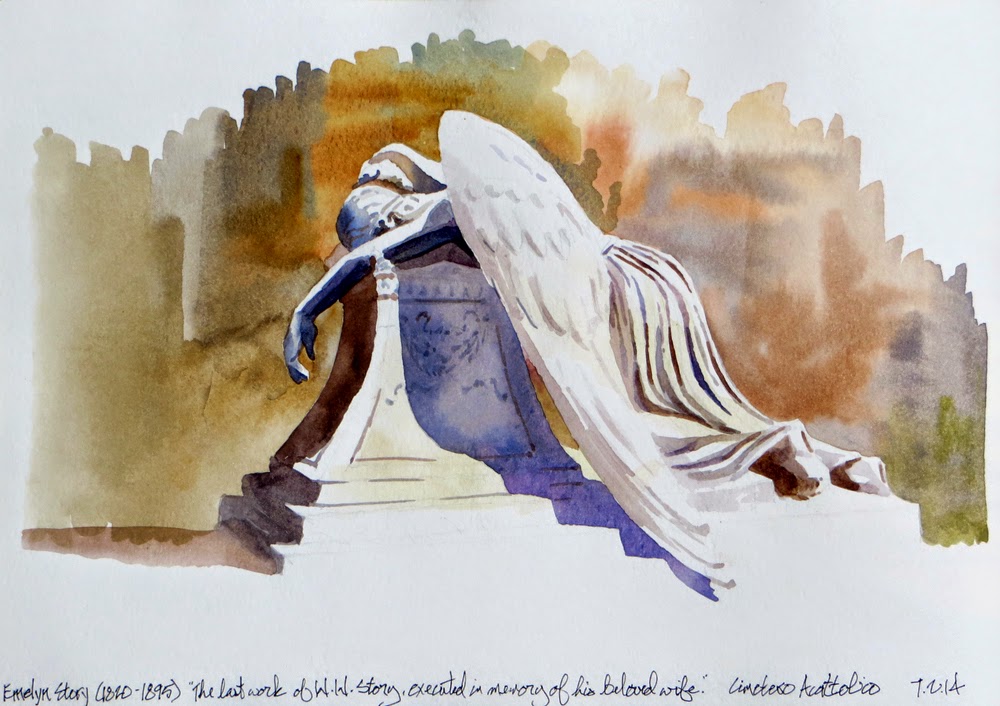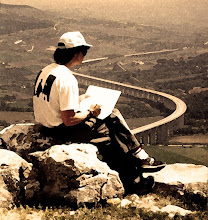Drawing sculpture is something I've been enjoying more and more over the past several summers of working here in Rome. With some of the most amazing sculpture in the world collected in the museums and churches, and also scattered around the city, there's always 'someone' who will hold a pose for as long as you like, and those poses are most often rather dramatic. In drawing sculpture, as with most subjects I find especially challenging, I typically prefer to use graphite, which makes it easier for me to find my way into the drawing slowly, to map out the lines, curves, and forms of what I'm seeing. For reference, some examples can be seen
here. But on an afternoon last week (after a long walking tour of the
Testaccio neighborhood guided by my colleague,
Tom Rankin), I decided to try watercolor.

I was in the Cimetero Acottolico, otherwise known as the "Protestant Cemetery." This is where you would have been buried if you happened to die in Rome and you weren't Catholic. So it's quite a who's-who of foreigners who lived in Rome - there are Keats and Shelley, Antonio Gramsci, Hendrik Christian Andersen, Chauncey Ives, Gottfried Semper, Gregory Corso ... the list is long and the funerary monuments greatly varied. But perhaps my single favorite tomb there is the "Angel of Grief," the final work of American sculptor
William Wetmore Story, carved for his wife, Emelyn. There are
numerous other versions of this sculpture but, as far as I know, this was the first. It's such a dynamic sculpture that it's difficult to find the best point of view for a sketch, but there's something about the angel's drooping hand that I found appealingly expressive. Also, the shadows were most interesting on this side at this particular time of day. The sketch needed some background, if only to give form to the upper part of the wing, but I'm glad I made the decision not to get into drawing plants and other tombs - I figured these might distract from the sculpture. It was really a nice drawing experience - quiet, peaceful, contemplative - and I look forward to drawing at this location again.






































